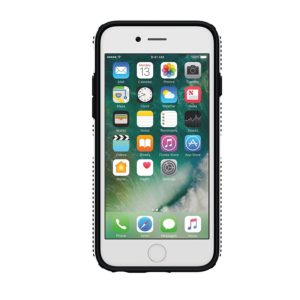How to Optimize Your Website for Mobile Users

Here’s what you need to do to optimize for mobile.
Mobile optimization is here to stay, and it’s demanding more and more of businesses and their websites. But mobile optimization is about more than just a responsive website design.
What is mobile optimization?
Mobile optimization is the process of designing and developing your website and its content to perform as well on mobile devices as it does on a desktop. As more consumers access websites on their smartphones, mobile optimization is increasingly important.
Google’s mobile-friendly algorithm change in 2015 (and a few more since then) was evidence that the search engine recognizes its responsibility to surface websites that painlessly get users what they need at the time that they need it.
Google doesn’t want to send mobile users to websites that provide a frustrating browsing experience — that would damage its promise to its users to always deliver helpful, relevant content.
Moreover, this algorithm change was and is a signal of a much larger shift that’s afoot — consumer behavior is changing, and it’s your job to adapt.
Building a mobile-friendly website is step one, but tweaking your website will not keep you ahead of consumers’ changing behavior and expectations.
In short, you have to infuse your marketing strategy with a mobile-first mindset. Here’s how.
-
Map your customer journey.
Consumers now expect onmichannel forms of experience from all of their digital interactions. They want to be able to accomplish whatever fits their fancy on whatever device is at hand. This means that simply adapting your site to look nice on different devices is not enough. As a marketer, you must dig deeper into your customers’ and prospects’ lives.
we know that a visitor on a mobile device is very unlikely to fill out a long form on one of our landing pages. So we started using Smart Content to automatically shorten the form when a mobile viewer is looking at it. By doing this, our mobile prospects increased by 5x.
-
Seize intent-rich micro-moments.
You’ve likely already developed a strong set of buyer personas. You’ve conducted user research and testing to understand which content and CTAs to present to each persona as they move down the funnel. You must now go a step further. You must understand both the rhythm and rhyme to when, why, with what, and from where people are interacting with your website and content.
Google encourages marketers to identify the “micro-moments” in a customer’s journey:
Micro-moments occur when people reflexively turn to a device — increasingly a smartphone — to act on a need to learn something, do something, discover something, watch something, or buy something. They are intent-rich moments when decisions are made and preferences shaped.
A number of brands have figured out how to anticipate and capitalize on these micro-moments.
Consumers are increasingly becoming acclimated to companies offering such intimately responsive experiences. 59% of shoppers say that being able to shop on mobile is important when deciding which brand or retailer to buy from, and 39% of smartphone users are more likely to browse or shop a company or brand’s mobile app because it’s easier or faster to make a purchase.
Confirming this intuition, the Pew Research Center’s study of U.S. smartphone found that 99% of smartphone owners use their phone at home, 82% use their phones while in transit, and 69% use their phone at work each week.
People don’t want a stripped down set of content. Instead, they want quick and easy access to the materials they need on whatever device they happen to be using.Thus, while you want to optimize your site, landing pages, emails, etc. for micro-moments, you do not want to force visitors into a box from which they cannot escape.
-
Consider your metrics.
The metrics you established in the desktop-centric days may not seamlessly translate to our new multi-device, micro-moment world. For example, you might have fought tirelessly to find ways to increase visitors’ time on your site, recognizing that more time means higher engagement, which translates to higher conversion.
-
Embrace the intimacy of mobile.
As marketers, we should take advantage of these trends and consider how to make our prospects’ mobile experience more personal and social. Perhaps change your website to increase the proportion of social CTAs you display when someone arrives on mobile.
-
Remember the basics and think ahead.
This can seem daunting, but mostly it means diligently applying the basics across channels. For example, since nearly half of all emails are opened on mobile, ensure your emails are mobile optimized. We recommend doing the following:
Use large, easy-to-read text.
Use large, clear images and reduce file sizes.
Keep layouts simple and invest in responsive templates.
Use large, mobile-friendly calls-to-action and links.
Recognizing the personal associations people have with their phones, you’ll want to ensure that the “From” name is familiar and that the preview text is inviting. And think ahead: Don’t email a link to a form or an event registration landing page that is not mobile-friendly.

